To ensure a comfortable and enjoyable Namibian adventure, let’s get you acquainted with our unique desert climate. First of all, if you’re from anywhere on the Northern Hemisphere, Namibia’s seasons are the opposite of what you’re used to. When it’s winter in your home country, it’s summer here and vice versa.
NAMIBIA'S SEASONS AND WEATHER
Reversed seasons, hot days, cold nights and coastal fog
A brief guide to our local weather
Summer vibes
Namibia’s peak summer lasts from ca. November to February and brings warm to hot weather throughout the country. Coastal areas are tempered by the cool Benguela current, providing refreshing breezes, and, at times, a mysterious fog. The Atlantic ocean is lovely at this time of the year, so be sure to spend a couple of days at the coast near Swakopmund, to enjoy some days at the beach. Inland regions, such as the capital city Windhoek, can experience high temperatures of around 38°C (95°F). But no need to worry, our summer heat is quite different than what most tourists are used to, since the air humidity in the inland is next to nothing, making it a dry heat – unless you’re lucky enough to experience a short summer rain-shower. The northern parts of Namibia receive their main rainfall during this season and the landscapes transform into lush greenery and both Namibia’s wildlife and people have a new spring in their step. But the rain is also something to be aware of as it can turn dusty roads into temporary rivers in a matter of minutes. This is not the time of the year to go camping in seemingly dry riverbeds. Even if there isn’t a cloud in sight, it may have rained further upstream and you won’t hear the water coming, so just be mindful when crossing rivers – they may look dry now but can be flooded within seconds. For those of you coming from the cold and wet parts of the world and are starting to get worried you won’t see the sun enough, relax! IF it rains, it’s no drizzle for days but a warm summer rain that is over sooner than we like (usually within 1 hour). And apart from perfect summer weather, it’s low season in Namibia from January to June, so you’ll also benefit from lower prices all around on your trip.
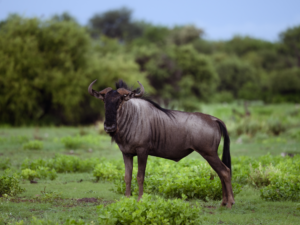
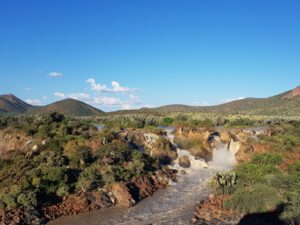
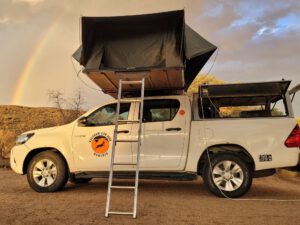
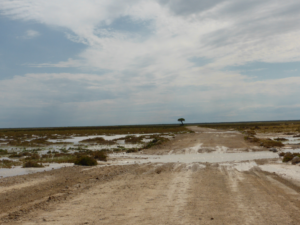
Dry winters
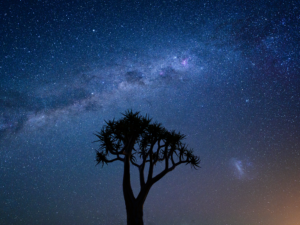
Winter in Namibia is from around June to August. The days are generally sunny and mild, with average temperatures ranging from 18°C to 25°C (64°F to 77°F) in most inland regions. However, as the sun sets, temperatures can drop significantly, sometimes reaching freezing levels, particularly in the desert regions like the Namib Desert or the Kalahari Desert. It is advisable to layer up and snuggle in for a cozy sleep or huddle-up around the camp fire. Winter nights in the desert will give you a chance to see a dazzling sky full of stars unlike anything you’ve ever seen before. And it’s still a good time to travel, since you won’t encounter any rain – and since there is no water readily available in the bush, animals have to come to man-made waterholes to drink, so you are sure to see a lot of action at the waterholes in private game reserves and national parks. If you don’t like the cold at night, stick to Namibia’s northern regions like the captivating Caprivi region. The higher north you venture during winter in Namibia, the milder the temperatures.
The coast is quite cold during this time as well, with temperatures ranging around 12-23°C. If you are on a camping trip, we suggest you spoil yourself to a comfortable self-catering accommodation when staying in Swakopmund, Walvis Bay or anywhere else along the coastline. The typical winter fog can leave your tent and bedding feeling rather cold and clammy.
But every once in a while the weather at the coast changes drastically, when the so-called East Wind arrives, and it can be anything but cold. What starts off as an unpleasantly freezing wind inland, arrives in the coastal regions as a hot, sandy wind after crossing the desert. Anyone who experiences this sandstorm while driving should definitely switch on their lights, drive particularly slowly, or better still, pull off the road and stop and wait a short while until the worst is over. Because this sandstorm can completely obscure your view or sandblast your car. But the short time just before and after the east wind, the so-called east wind mood enchants the coastal regions with beautiful, windless, warm weather.
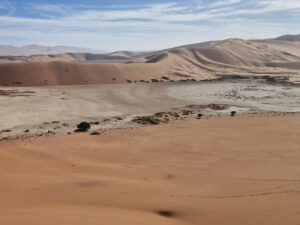
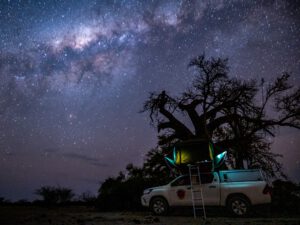
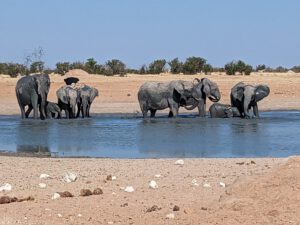
Now you’re ready to conquer Namibia’s weather quirks! By understanding and preparing for the weather conditions, you can fully enjoy your time exploring the remarkable landscapes, encountering diverse wildlife, and immersing yourself in the rich culture of this beautiful country. So pack accordingly, stay warm during the desert nights, and create unforgettable memories in Namibia!
Of course, Namibia also officially has spring and fall, but we feel that the change from winter to summer or summer to winter happens so quickly that it is not worth mentioning here in this context.
